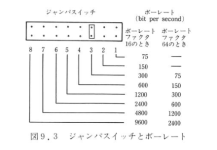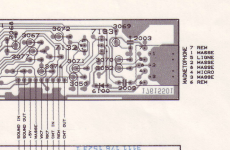1980s_john
Experienced Member
Ah, but without the diagrams, it's not obvious (to me) what the pinout order is (at least not being a DIN connector expert; like in that Japanese user manual the clockwise order of the CMT pins from 1 is 1-4-2-5-3-7-8-6. Also in that manual is the currently the only photo of that RS232 ribbon cable that I've come across!
I've got some diagrams of pinouts including the PC-8001 here:
https://vintagecomputers.sdfeu.org/general/leads.html
Note a MSX cassette lead should work fine.
Regards,
John
PS DIN connectors are described here: https://en.wikipedia.org/wiki/DIN_connector (so thanks WP for the diagrams)
Last edited:





